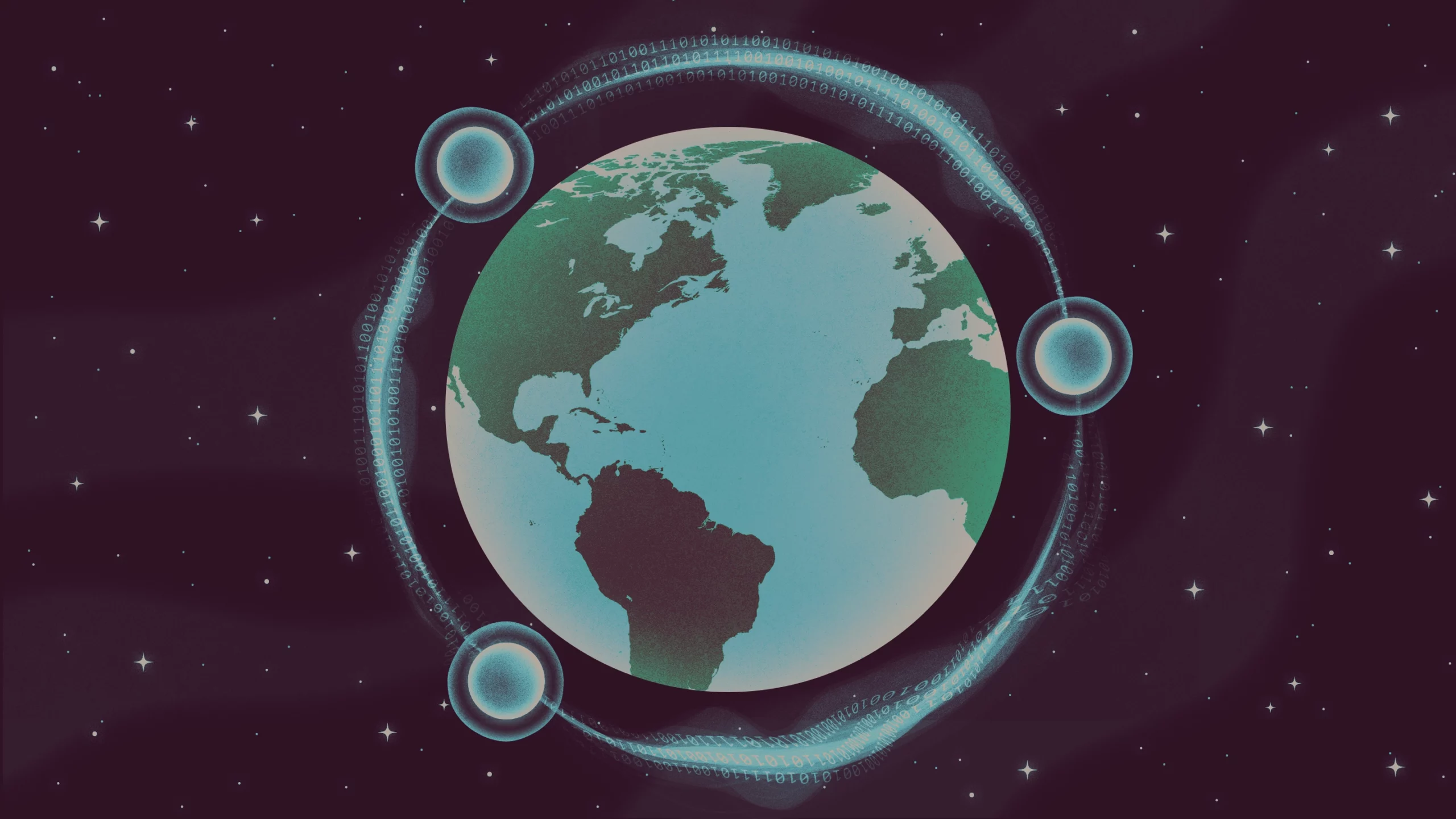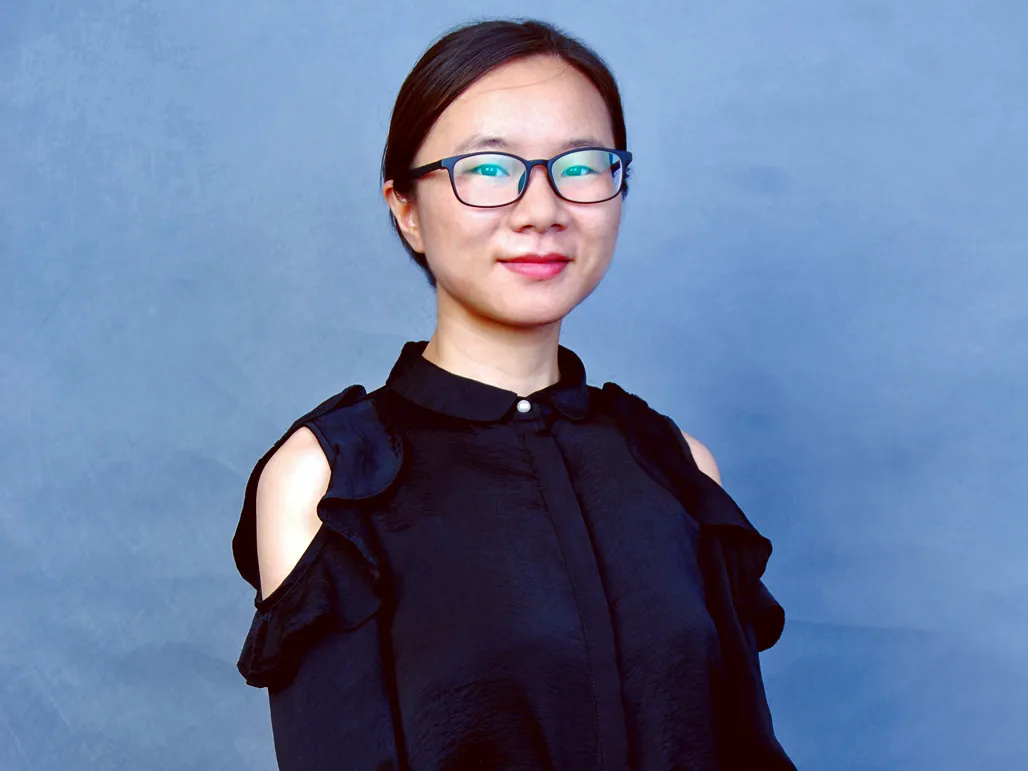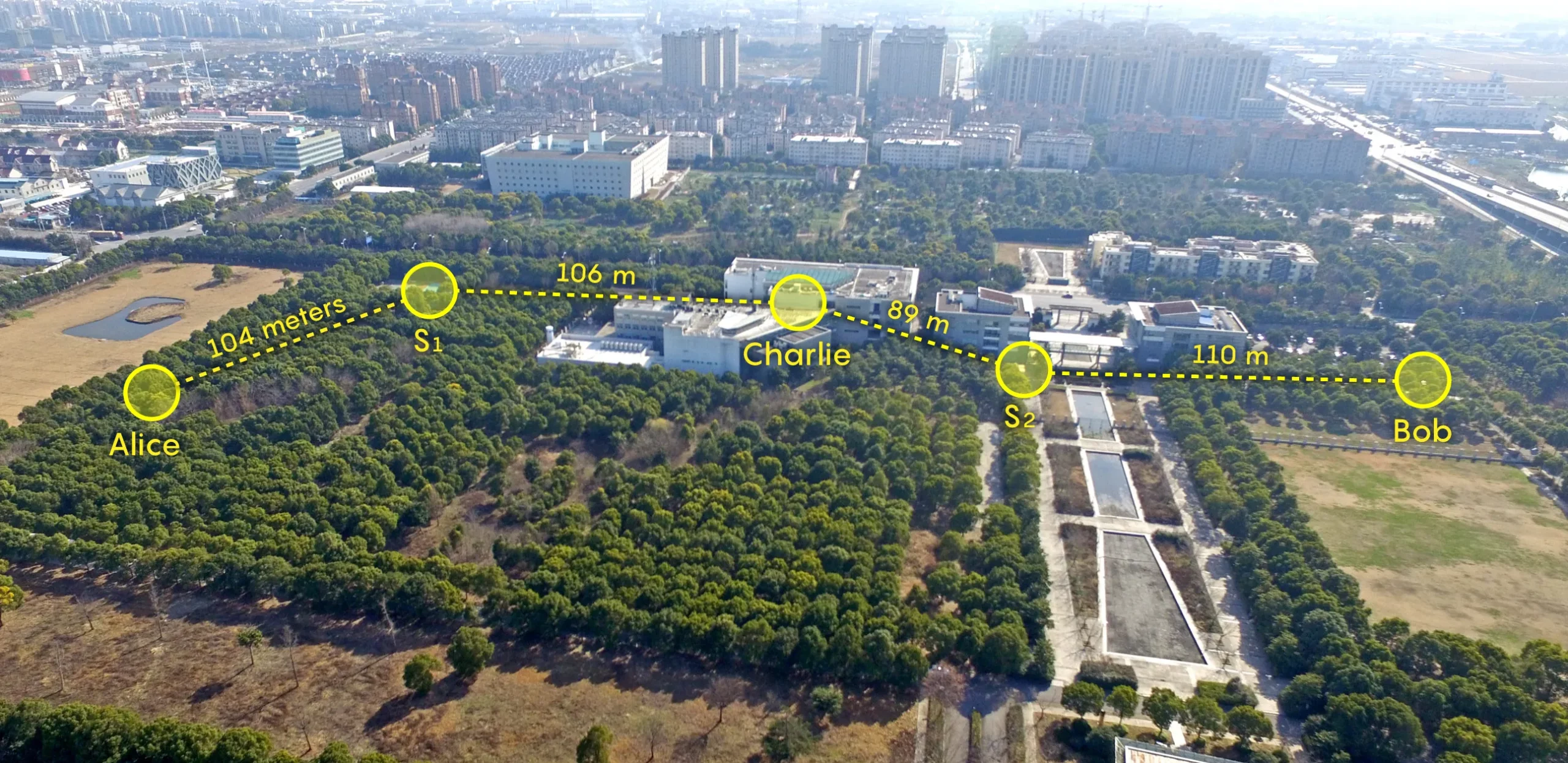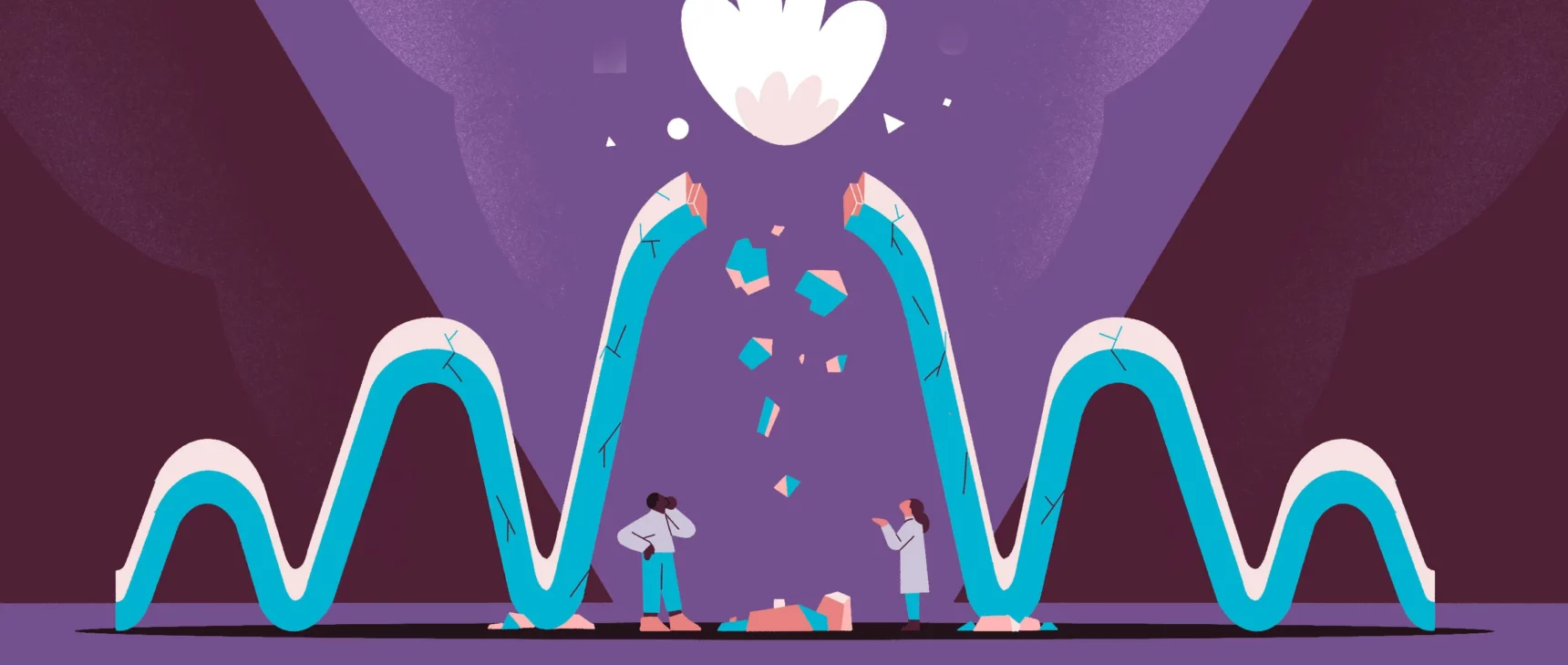New Entanglement Results Hint at Better Quantum Codes

Three-way entanglement represents one small step toward a global quantum internet.
Kristina Armitage/Quanta Magazine
Introduction
This month, three scientists won the Nobel Prize in Physics for their work proving one of the most counterintuitive yet consequential realities of the quantum world. They showed that two entangled quantum particles must be considered a single system — their states inexorably intertwined with each other — even if the particles are separated by great distances. In practice, this phenomenon of “nonlocality” means that the system you have in front of you can be instantaneously affected by something that’s thousands of miles away.
Entanglement and nonlocality enable computer scientists to create uncrackable codes. In a technique known as device-independent quantum key distribution, a pair of particles is entangled and then distributed to two people. The particles’ shared properties can now serve as a code, one that will keep communications safe even from quantum computers — machines capable of breaking through classical encryption techniques.
But why stop at two particles? In theory, there’s no upper limit on how many particles can share an entangled state. For decades, theoretical physicists have imagined three-way, four-way, even 100-way quantum connections — the sort of thing that would allow a fully distributed quantum-protected internet. Now, a lab in China has achieved what appears to be nonlocal entanglement between three particles at once, potentially boosting the strength of quantum cryptography and the possibilities for quantum networks generally.
“Two-party nonlocality is crazy enough as it is,” said Peter Bierhorst, a quantum information theorist at the University of New Orleans. “But it turns out quantum mechanics can do stuff that even goes beyond that when you have three parties.”
Physicists have entangled more than two particles before. The record is somewhere between 14 particles and 15 trillion, depending on whom you ask. But these were only across short distances, just inches apart at the most. To make multiparty entanglement useful for cryptography, scientists need to go beyond simple entanglement and demonstrate nonlocality — “a high bar to achieve,” said Elie Wolfe, a quantum theorist at the Perimeter Institute for Theoretical Physics in Waterloo, Canada.
The key to proving nonlocality is to test whether the properties of one particle match up with the properties of the other — the hallmark of entanglement — once they’re far enough apart that nothing else could cause the effects. For example, a particle that’s still physically close to its entangled twin might emit radiation that affects the other. But if they’re a mile apart and measured practically instantaneously, then they are likely linked only by entanglement. The experimenters use a set of equations called Bell inequalities to rule out all other explanations for the particles’ linked properties.
With three particles, the process of proving nonlocality is similar, but there are more possibilities to rule out. This balloons the complexity of both the measurements and the mathematical hoops that the scientists must jump through to prove the nonlocal relationship of the three particles. “You have to come up with a creative way to approach it,” Bierhorst said — and have the technology to create just the right conditions in the lab.
In results published in August, a team in Hefei, China, made a crucial leap forward. First, by shooting lasers through a special type of crystal, they entangled three photons and placed them in different areas of the research facility, hundreds of meters apart. Then they simultaneously measured a random property of each photon. The researchers analyzed the measurements and found that the relationship between the three particles was best explained by three-way quantum nonlocality. It was the most comprehensive demonstration of three-way nonlocality to date.

Xuemei Gu helped demonstrate the nonlocal entanglement of three particles.
Courtesy of Xuemei Gu
Technically, there remains a small chance that something else caused the results. “We still have some open loopholes,” said Xuemei Gu, one of the lead authors of the study. But by separating the particles, they were able to rule out the most glaring alternative explanation for their data: physical proximity.
The authors also based their experiment on a new, stricter definition of three-way nonlocality that has been gaining traction in the past few years. Whereas past experiments allowed for cooperation between the devices that measured the photons, Gu’s three devices could not communicate. Instead, they made random measurements of the particles — a restriction that would be useful in cryptographic scenarios where any communication can be compromised, said Renato Renner, a quantum physicist at the Swiss Federal Institute of Technology Zurich. (Using the older paradigm, a Canadian team demonstrated three-way nonlocality at a distance in 2014.)
Now that researchers following the new definition have successfully entangled particles this far apart, they can focus on expanding the distance even further.
“It’s an important steppingstone toward doing longer-distance, bigger-scale experiments,” said Saikat Guha, a quantum information theorist at the University of Arizona.
Most directly, this technology can power more expansive quantum key distribution, Renner said. If you use entangled particles as the key to encryption, the same Bell inequalities that physicists use to test for nonlocality can ensure that your secret is completely secure. Then even if the device you use to send or receive a message gets maliciously manipulated by your worst enemy, they won’t be able to determine your quantum key. Those secrets stay between you and whoever has the other entangled particle.

Researchers in China entangled three particles and placed them hundreds of meters apart in facilities labeled Alice, Bob and Charlie.
USTC
Quantum key distribution is “the thing people are excited about,” Renner said. Last year, three separate groups demonstrated the protocol in the lab, though still on a small scale. That’s why three-way nonlocality will be so important. “You have in principle much more cryptographic power,” because these three-way connections cannot be simulated by cobbling together a few two-way links.
“It’s a fundamentally new level of phenomena,” Bierhorst said, one that could expand device-independent cryptography from basic, two-way communication to an entire network of secret-sharers.
Besides cryptography, multiparty entanglement also opens up possibilities for other types of quantum networks. Researchers like Guha are working on a quantum internet, which could link up quantum computers the way the regular internet connects ordinary devices. This system would bring together the computing power of many quantum devices by connecting millions of particles with varying levels of entanglement across varying distances. We have all the individual building blocks for such a system, Guha said, but assembling it “is a huge, huge engineering challenge.” With this goal in mind, scientists in the Netherlands have succeeded in entangling three particles in a network spanning two separate labs — though unlike Gu’s team, they weren’t focused on demonstrating nonlocality.
This work on three-way entanglement started as “just an interesting phenomenon,” said Bierhorst. But “when you have something that quantum mechanics can do that it’s impossible to do otherwise, that’s going to open up all sorts of new technological possibilities that can be exploited in unforeseen ways.”
For now, a few labs have demonstrated four-way nonlocality between particles that are very close together. “These experiments are pretty speculative at this point. You have to make a lot of assumptions,” said Bierhorst.
The three-way experiments still rely on some assumptions as well. The Nobel laureates spent half a century ruling out those loopholes in their two-way experiments, finally succeeding in 2017. But we’ve come a long way since then technologically, said Renner.
“What [took] decades before will now happen in a year or so,” he said.



